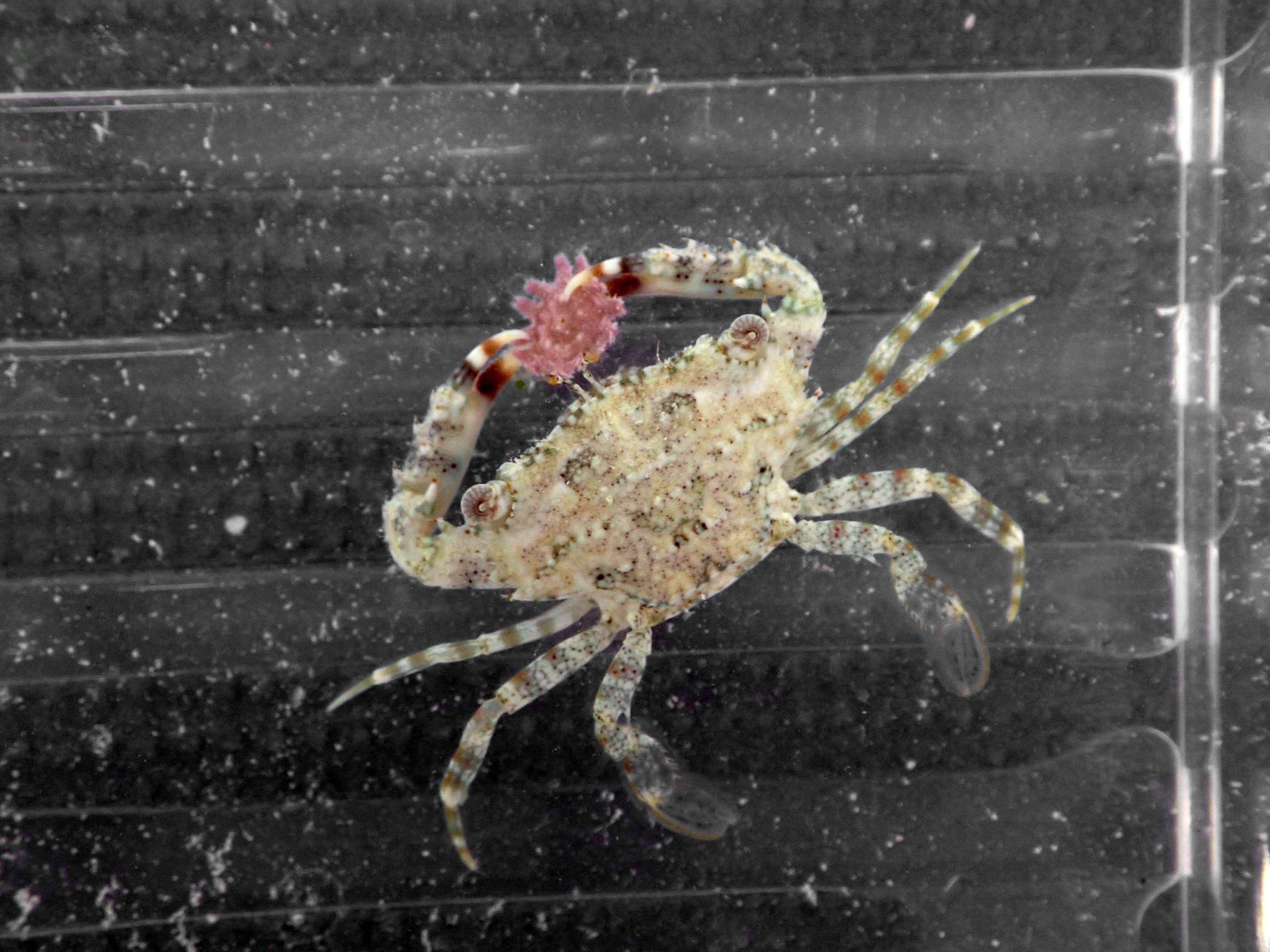Media release
From:
Small, hidden crabs may be the missing link influencing coral-eating starfish populations, according to a study published in the prestigious Proceedings of the National Academy of Science of the United States of America (PNAS) journal.
While we know crown-of-thorns starfish (COTS) outbreaks can decimate coral reefs across the Indo-Pacific, the boom-and-bust population cycles of these naturally occurring corallivores are debated among scientists.
Senior author AIMS Researcher Dr Sven Uthicke said the research team found small, hidden decapod crabs were a significant, previously unrecognised COTS predator, in addition to reef fish and triton shells.
“Using our newly developed eDNA techniques to detect COTS, we found COTS DNA in the guts of seven species of decapod caught across more than 1000km of the Great Barrier Reef,” he said. “And we found fewer crabs in areas prone to COTS outbreaks.”
Using DNA from this study as well as predation data from previous aquarium experiments, the authors found rates of juvenile starfish consumption by decapods were around 1.6 to three times lower in reefs prone to COTS outbreaks.
Dr Uthicke said the researchers found the crabs, which hide under coral rubble, were consuming juvenile COTS in their nurseries before they emerged as destructive corallivores.
“Consuming juvenile COTS is a highly effective way to reduce COTS populations because, not only are they removed before they can start feeding on coral, but they can be removed in large numbers because they are so small,” he said.
“It’s a numbers game. Some of the crabs can eat 20 juveniles a day, whereas fish or triton may eat one adult every few days or per week.”
The results suggested decapods were a previously unrecognised predator that could help explain the spatial patterns of COTS outbreaks and could potentially play a role in reef conservation and management strategies.
Dr Uthicke said that to achieve this, it needs to be better understood what factors control crab populations.
The lead author was Dr Kennedy Wolfe of The University of Queensland, and the team included researchers from The University of Queensland, CSIRO, AIMS and James Cook University.
The research was funded by the Winnifred Violet Scott Trust and the COTS Control Innovation Program, supported by the partnership between the Australian Government’s Reef Trust and the Great Barrier Reef Foundation.



 Australia; Pacific; QLD
Australia; Pacific; QLD



